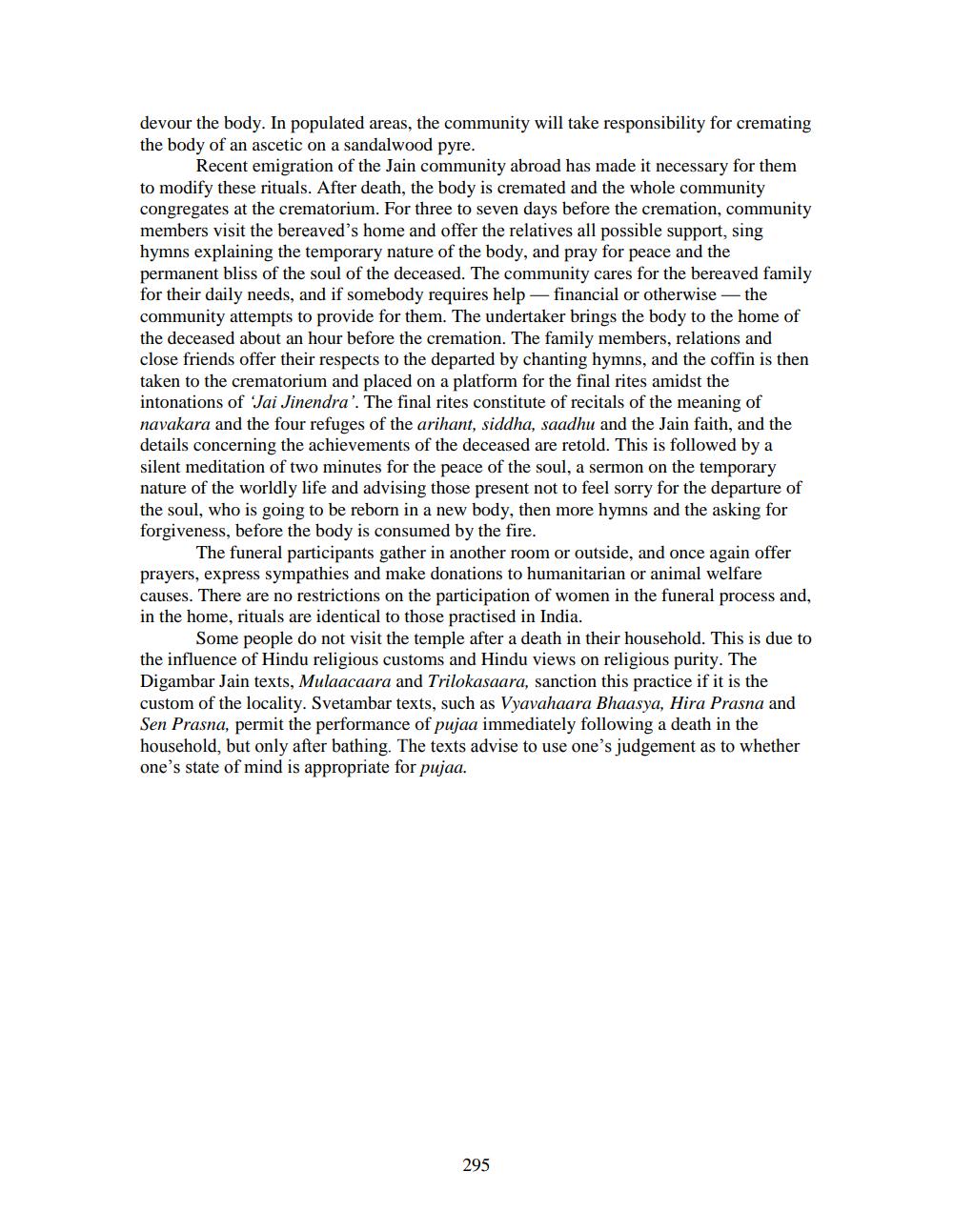________________
devour the body. In populated areas, the community will take responsibility for cremating the body of an ascetic on a sandalwood pyre.
Recent emigration of the Jain community abroad has made it necessary for them to modify these rituals. After death, the body is cremated and the whole community congregates at the crematorium. For three to seven days before the cremation, community members visit the bereaved's home and offer the relatives all possible support, sing hymns explaining the temporary nature of the body, and pray for peace and the permanent bliss of the soul of the deceased. The community cares for the bereaved family for their daily needs, and if somebody requires help - financial or otherwise - the community attempts to provide for them. The undertaker brings the body to the home of the deceased about an hour before the cremation. The family members, relations and close friends offer their respects to the departed by chanting hymns, and the coffin is then taken to the crematorium and placed on a platform for the final rites amidst the intonations of Jai Jinendra'. The final rites constitute of recitals of the meaning of navakara and the four refuges of the arihant, siddha, saadhu and the Jain faith, and the details concerning the achievements of the deceased are retold. This is followed by a silent meditation of two minutes for the peace of the soul, a sermon on the temporary nature of the worldly life and advising those present not to feel sorry for the departure of the soul, who is going to be reborn in a new body, then more hymns and the asking for forgiveness, before the body is consumed by the fire.
The funeral participants gather in another room or outside, and once again offer prayers, express sympathies and make donations to humanitarian or animal welfare causes. There are no restrictions on the participation of women in the funeral process and, in the home, rituals are identical to those practised in India.
Some people do not visit the temple after a death in their household. This is due to the influence of Hindu religious customs and Hindu views on religious purity. The Digambar Jain texts, Mulaacaara and Trilokasaara, sanction this practice if it is the custom of the locality. Svetambar texts, such as Vyavahaara Bhaasya, Hira Prasna and Sen Prasna, permit the performance of pujaa immediately following a death in the household, but only after bathing. The texts advise to use one's judgement as to whether one's state of mind is appropriate for pujaa
295




